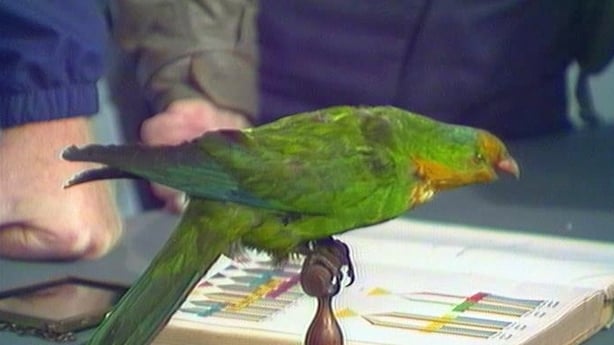Pioneering colour photography included a process devised by a Dublin man Professor John Joly.
Eddie Chandler who is writing a book on the history of photography explains some early methods for producing colour images. He describes the Joly Process and the autochrome process of the Lumière brothers.
One of the first pioneers in colour photography was an Irish man Professor John Joly.
The Joly Process for producing colour photographs was developed by Professor John Joly (1857-1933) of Trinity College Dublin.
In order to satisfactorily produce a colour photograph, it's necessary to separate the white light coming from the subject matter into the three basic colours – red, green and blue.
Modern colour does this by being a sandwich of three separate emulsions each of which are made sensitive to one or other of the three colours. In the early 1890s, technology did not exist to produce such a film. Instead, Professor Joly used a triple filter. This was a glass screen containing alternate lines of red, green and blue. This was then put in close proximity to a photographic plate and exposed within a camera. The plate was then developed and a transparent positive was made. This was then bound up with a similar lined screen and projected on a screen resulting in a colour photograph.
It was a question of jiggling this around until you got the right colour.

Professor John Joly's Parrot
Aonghus McAnally demonstrates how it worked using one of Professor Joly's slides of a green parrot. Professor Joly photographed mainly static objects, like his parrot, due to the very long exposures required.
Eddie Chandler points out that in addition to the problem of the lengthy exposure, the Joly Process tended to be quite expensive. A few years after it was introduced, the Lumière brothers in Paris, Auguste and Louis, introduced their autochrome process which was greatly superior. This process had an integral filter screen incorporated into it.
Most of the early colour photograph processes were known as additive processes. The modern colour processes are all subtractive processes with one exception, the recently introduced Polarchrome. Eddie Chandler says that the Polarchrome, while more sophisticated, is practically the same as the Joly Process in that it uses a lined screen and a monochrome photographic emulsion.
This episode of 'Box Camera’ was broadcast on 24 August 1986. The presenter is Aonghus McAnally.
'Box Camera’ was a series of six half hour magazine style programmes with photography as its theme presented by Aonghus McAnally and Aine Lawlor.






























